Top 3 Vineyards for Pinot Noir
If you love a good Pinot Noir, then this the blog post for you. We will be bringing you Pinot from multiple vineyards this fall! Check out our options and winemaking tips below.
Lodi Pinot Noir:
Whenever I think of Lodi Pinot Noir the song “Cherry Bomb” by The Runaways pops into my head. This because Lodi Pinot’s can be a wild mix of cherry, strawberry, with a touch of smoke. Hello world, your feisty Pinot has arrived! Many people have argued that Lodi is too hot a region to grow Pinot Noir and I disagree. If you are interested in a fruit forward Pinot Noir these are the grapes for you.
Region Specifics: Our Pinot Noir grapes are sourced from the Mokelumne River of Lodi, the coolest AVA in Lodi. This region has a similar weather pattern to the Mediterranean climate of the Northern Costal California regions. This is because the eastern facing river brings in cool air from the ocean, creating the cool nights and moderate temperature swings that Pinot Noir loves.
Winemaking Suggestions: We suggest using RC 212 yeast during fermentation coupled with the proper nutrients. RC 212 is known for its ability to generate ripe berry, bright fruit and spicy characteristics and to consistently produce Pinot Noir with good tannin structure. Make sure to watch your temperatures during fermentation in order to ensure a great bouquet.
Paso Robles Pinot Noir:
Paso may be known as the “Rhone Ranger Region” but it boasts some delicious Pinot Noirs. These Pinots are delicate, earthy, and full of spice. If you’re looking to create a Burgundian style Pinot Noir these grapes will get your there. Notes of raspberry, cedar, cassis, and tobacco will jump out of your glass.
Region Specifics: Our Pinot Noir is grown on the West Side of Paso Robles. The Westside is full or rolling hills and cool breezes swooping in from the ocean. These moderate temperatures give Pinot the ability to mature to its prime complexity. The soils are calcareous containing high levels of calcium and magnesium carbonate. These nutrients create wines with good structure.
Winemaking Suggestions: We suggest using BRL97 in order to retain the beautiful color of these grapes. BRL97 is moderate fermenter, so it is a good yeast to use if you have trouble keeping fermentation temperatures at bay.
Washington State Pinot Noir:
If you like to nerd out on Pinot Noir clones we have a few to choose from coming out of Washington. Our grower Jeremey is sustainably cultivating multiple clones of Pinot Noir in the Rattlesnake Hills AVA. One of our winemaking groups in NY worked with these grapes and gives you great information on the clones and his winemaking experience. Click here for the post.
Region Specifics: This Pinot Noir is Own Rooted. An Own-Rooted vine is a vine that has no rootstock. This is not common in most wine regions around the world. The rootstock & vine grafting was necessary at one point to protect from specific diseases such as Phylloxera. The Washington soil type is made up of a fine silt loam which Phylloxera hates – this is why they can plant Own-Rooted vines.
Winemaking Suggestions: We suggest using 71B or RC212 yeast during fermentation. 71B metabolizes malic acid, helping to regulate the TA and pH balance. It also helps ensure the flavor profile of the grape shines through fermentation. . RC 212 is known for its ability to generate ripe berry, bright fruit and spicy characteristics and to consistently produce Pinot Noir with good tannin structure.
Embracing Our Roots: Making a Traditional Italian-Styled Wine from California Grapes
Very few locations in the world have such a long standing tradition for making fine wines as Italy. They are famous not only for their superior quality, but for their techniques and fervent passion for wine making. Hundreds, if not thousands, of years of experience have cultivated some of the most premier wine grapes on the planet, generating complex, benchmark wines. Winemaking has become iconic to Italian culture and the generations of Italian immigrants around the world.
While many of us may hold dreams of traveling to Italy to help create some of these wonderful wines, making it a reality was not possible, until now. Through much research into climate and grape genetics, Musto Wine Grape can now source fresh grapes from select areas of California that have climates incredibly close to the Italian Mediterranean climate, comparable soil compositions, and exact genetic clones of the vines in Italy. The grapes can be crafted into wines that bear strong resemblance to their Old World counterparts.
Musto Wine Grape proudly sources authentic Italian varietals such as Nero D’Avola, Montepulciano, and Nebbiolo from the Contra Costa region of California. This wine growing region lies in a valley that borders on the north and west side by the Suisun Bay and San Pablo Bay, respectively. The bays create a more temperate climate, with cooler days and nights that allow for gentle and even ripening of the grapes. The alluvial plains and ragged coastline created by glacier movement, is remarkably similar to that of the Italian coast. The mineral-rich, alluvial plains contribute to a complex fruit, full of sweet berry yet earthy notes, in more of an Old World style. The gravel laden and sedimentary soils created by the glacial movements creates excellent drainage for the grapevine roots, causing them to grow strong and deep. This generates a very concentrated fruit, akin to the grapes in Italy. The more concentrated fruit is an excellent candidate for extended maceration or the ripasso method, two traditional techniques in Italian winemaking. The ripasso method originated in the Veneto region of Italy as a means of creating Amarone. Grapes are partially dried, concentrating their sugars and flavors. After the drying period, grapes are then pressed, the contents added to enhance Amarone. The wizened, yet not fermented skins are then added to the processing of Valpolicello and Montepulciano, hence deriving the name “ripasso” or “passed over”. These skins add a lot of extra tannin and concentrated flavor to the must, contributing not only to flavor but to the body and mouthfeel.
Not only does the terroir of Contra Costa greatly lend itself to the more Old World profile of these varietals, but the microclimate of the area contributes as well. As previously mentioned, the Contra Costa valley is surrounded on two sides by bays which help moderate the temperature. Having more moisture in the western winds generated off of the bays, provides adequate light hydration to the plants, while still preserving the concentrated fruit. The more temperate climate allows for more even ripening of the grapes; a long a gentle growing season, similar to the Mediterranean. Mount Diablo (3,845ft) provides elevation to some of the vineyards, creating a gentle slope ideal for viticulture. Having the mountain slope will aid in drainage and sun exposure for the grapes, again creating a microclimate very similar to the Italian coast.
The beneficial conditions of the Contra Costa region as well as Suisun Valley to growing Italian varietals, gave the vineyard owners and managers much to consider upon planting. They understood the unique aspect of their growing region and worked to source the best genetic clones of the benchmark Italian varietals. Both valleys are also home to some of the premier olive groves in California, utilizing the Mediterranean-like climate for high quality production. At the Lanza-Musto Vineyards within Suisun Valley (a premier growing region contingent to Napa), the Primitivo clone of Zinfandel as well as the Brunello clone of Sangiovese were planted to yield grapes with a more traditional Italian flavor profile. These clones are direct relatives of the varietal clones planted in Italy and are pruned and trellised in a comparable style. Their yields are kept low, averaging 5-6 tons per acre, preserving a more intense, concentrated fruit with a rich, earthy character.
In Contra Costa, the Nebbiolo planted can be crafted into a traditional Barolo style wine, renowned as one of the greatest Italian red wines. The Nero D’Avola and Montepulciano varieties from this region also can be crafted into more traditional Italian styled wines, often complimented with traditional Italian derived yeast strains such as BM45, BM 4×4, and BRL97. These yeast strains have been isolated from long established wineries in Italy and propagated for commercial distribution by top yeast researching universities in Italy such as the University of Torino. The use of these strains with the grapes of these growing regions can bring a truly Italian winemaking experience into your winery and the Italian passion for winemaking into your heart.
by the Winemakers at Musto Wine Grape
Veraison in the vineyard and how it affects winemaking
Currently our grapes are going through veraison in California. Veraison occurs when the berry transitions into the ripening stage. From now forward the berry will increase in sugar concentration until it is harvested at the desired brix level. Grapes for sparkling wine or champagne are harvested around 17 brix and grapes for still wine are harvested around 25 brix. The brix level will determine the alcohol level in the wine. For example, a grape picked around 25 brix should create a 12.5% alch by volume wine.
Harvest will be here before we know it! It’s to time start getting organized. Click HERE to see our upcoming events and classes that will help you get ready for harvest.
Making Wine from King’s River Ranch Grapes
The King’s River Vineyard is located in Sanger, CA – Southeast of Fresno, on the way to Squaw Valley, Tahoe and the Sierra Foothills.
The vineyard is made up of 40 acres of white ash & sandy loam soil. The vineyard has been in existence since 1954 and the family has grown everything from grapes for wine and raisins to peaches, plums, and apricots on this little piece of paradise. However, they ultimately decided to focus on what they love most – boutique style wines. Each block is meticulously managed. They thin leaves, drop fruit to secure intense flavors, and drip irrigate as to not over-water the vines. This family definitely produces grapes of distinction.
Grape Varieties Available for Purchase:
Cabernet Sauvignon (Clone 337)
Petite Sirah
Alicante
Syrah
Barbera
Cabernet Franc
Tempranillo
Primitivo
Albariño
Muscat
Chenin Blanc
Falling for Pinot Noir…All Over Again!
Falling for Pinot Noir…All Over Again!
By Guest Blogger: Ertan Seyyar Sener
Well, it’s been seven years since Pinot Noir took to the big screen and Americans began their love affair with this very attractive, although elusive grape variety. The honeymoon has been over for a while now, so it is time we renew our vows with a wine that deserves our undivided attention. As the leaves start to turn, and there begins to be a slight chill in the air, I find the color of wine in my glass to change from white to pink to a beautiful translucent red, Pinot Noir. I feel there is no better time of year than Autumn to enjoy this light, but luscious red wine. A wine that begs to paired with all the fabulous flavors of Fall. Let’s take a little closer look at the personality of Pinot and try to predict that perfect pairing with my favorite fall fare.
I’m gonna say it, sorry…terroir. Probably one of the most debated terms in oenology, but I believe it to be very true. What is it? Well, it’s the idea a wine, a grape can reflect flavors and even characteristics of the place, the soil that it has been growing, for what could be a very long time. For instance, if the soil is mostly limestone, you might find the wine to have a certain minerality and precision, but as one author put it, “when was the last time you licked limestone?” Sure, this can’t be a totally literal idea, but I find Pinot Noir to be a certain conduit that can connect a person with the place. This can’t be just any place, for Pinot Noir is very particular to where it grows up. Try to grow it in too hot of a place and it will ripen too early and never achieve the levels and layers of flavor that its’ thin skin can create. Of all the places on Earth, is the Burgundy region in France, where if all the conditions are right, Pinot Noir can reflect all the slight nuances of terroir. The only other places that have had any success in producing our fickle friend are New Zealand, Oregon, and the cool corners of California and Chile. So, what is so great about this grape that people find it worthy of emulating around the world?
Pinot Noir has a duality that is pleasing to both white wine as well as red wine drinkers. The grape has thin skins with usually light, silky smooth tannins. Tannis are that drying feeling you get on the side of your tongue, not a bad thing, but could exhaust your palate, and we haven’t even got to the food, so we don’t need an exhausted palate! The profile of Pinot Noir is a usual suspect of pleasantries; red berries, red cherry, bright and light, and with the more mature Pinots hints of leather and tobacco. Put a little chill on the wine and it is a “cooler” version with a very bright and refreshing quality. The greatest thing about Pinot Noir is that it can cross the spectrum of food pairings and meet the needs for red as well as white wine dishes! Oh well, I can’t take it anymore! Let’s get to the food!
Autumn has a cornucopia of flavors, fruits and spices that beg to be paired with Pinot Noir. As well as, a beautiful list of lighter meats that can be braised, smoked or roasted from pork to duck to turkey, Oh my! The wine calls for earthy flavors such as: truffles, wild mushrooms, coriander. Pinot Noir is very happy next to fruit flavors such as figs, blackberry, and pomegranates. Duck breast and duck leg confit is one of my favorite pairings for Pinot Noir. A wonderful balance of earthy flavors, as well as succulent flavors, that react wonderfully with the fruit and acidity to Pinot Noir. Depending on the producer and vintage, Pinot Noir can have layers and layers of flavor that can be enjoyed on their own or paired up with some of these classic fall eats.
Please enjoy Pinot Noir this Fall season from any and all the places that hold this grape variety sacred in the process of production. Making this wine is a testament to the appreciation of soil, wine and tradition. So, before the weather makes it necessary for a sweater and some flames in the fireplace, remember to pull out that bottle of Pinot Noir and let it dance with every thing Fall. To leave you with one of my favorite quotes from Windows on the World Complete Wine Course by Kevin Zraly: “One Author trying to sum up the difference between Pinot Noir and Cabernet Sauvignon, said, ‘Pinot is James Joyce, while Cabernet is Dickens. Both sell well, but one is easier to understand.’” The only thing to understand here is the marriage of Fall flavors and Pinot Noir is an unbreakable one, one to stand the test of time. Cheers!
About the Blogger: Ertan Seyyar Sener has been working in the world of wine for over ten years, in restaurants, retail as well as wine education. He has been recognized in Wine Spectator as well as in Ronn Wiegand’s Sommelier Guide to Restaurants in America 5th Edition. Ertan is the Buyer/Manager at West Side Wines and Spirits.
West Side Wine and Spirits
10 Raymond Road
West Hartford CT 06107
860.233.1241 w
860.233.1243 f
Wooden Valley Winery WINS at the SF Chronicle Wine Judging Competition
Check out Wooden Valley Winery’s (aka Lanza-Musto Vineyards) WINS at the 2018 SF Chronicle Wine Judging Competition. Over 7000 wines were entered from 36 states in this wine competition. Congratulations to the Lanza Family and the Wooden Valley Crew on your much deserved awards!
2016 Wooden Valley Barbera Suisun Valley – Gold
2015 Lanza Family Cabernet Sauvignon – Gold
2017 Wooden Valley Chardonnay – Silver
2016 Wooden Valley Malbec – Gold
2016 Wooden Valley Merlot – Bronze
2015 Lanza Family Petite Sirah – Bronze
2016 Wooden Valley Sangiovese – Double Gold
2017 Wooden Valley Sauvignon Blanc – Silver
2015 Wooden Valley Zinfandel – Silver
JBF Foundation Wine Auction
Hello Winemakers,
Thursday May 31st there is a great event going on with great prizes! You can win a Wine Class for 20 people at Total Wine & More, a Complete Winemaking Kit, and More! The silent auction will be benefiting the Jeff Braun Foundation which focuses on helping build orphanages in Honduras. For full information about the Jeff Braun Benefit please see below. Should be a great event!
Jeff Braun Foundation – Partnership with Hope Children’s Home – Honduras
Making Consistently Flawless Wine Seminar with Daniel Pambianchi
In this seminar, you will learn the intricate interplay and management of oxygen, sulfur dioxide, and polyphenols, and clarification and stabilization techniques towards making greater wines more consistently and flawlessly. The seminar will also demonstrate how to measure and control oxygen and sulfur dioxide in wine.
This seminar is intended for intermediate and advanced amateur and small-winery winemakers. Click the “HERE” to download the complete program, including specific seminar content.
Don’t miss out on this special opportunity to attend Daniel Pambianchi’s seminar on advanced winemaking on September 8, 2018, 9:00 AM – 4:00 PM, at Musto Wine Grape Company in Hartford, CT. Lunch and coffee are provided. Please alert Christina of any food allergies at cmusto@juicegrape.com.
Sign up for the seminar via this link: http://www.juicegrape.com/Seminar-Daniel-Pambianchi/
SEMINAR FEES
Until July 6 – $200
July 7 to August 10 – $225
August 11 to September 8 – $250
ADDITIONAL BENEFITS FOR PARTICIPANTS
– A non-expiring membership to Daniel Pambianchi‘s on-line winemaking club.
– Free analysis of one wine in the first year of membership.
– 20% off the retail price on signed copies of Daniel Pambianchi’s book “Techniques in Home Winemaking.”
Please email Christina Musto at cmusto@juicegrape.com with any questions.
BOOKING AND CANCELLATION POLICY:
You can register here. Payment in full is required to reserve your seat. As a minimum number of participants is required to run this seminar, you will be notified by August 17, 2018, and issued a full refund if the minimum is not reached. Paid participants can cancel up to and including August 17, 2018 and issued a full refund. No refunds or exchanges will be offered after that time under any circumstances.
The Chileans have ARRIVED!
Hello Winemakers,
The time has finally come! ALL of the Chilean grapes and juices have arrived! Give us a call or shoot us an email to set up your pick-up.
877.812.1137 – sales@juicegrape.com
Happy Winemaking!!
Sincerely,
The Musto Crush Crew






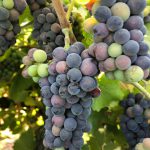
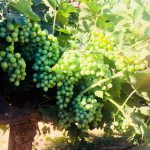
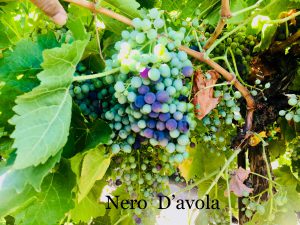
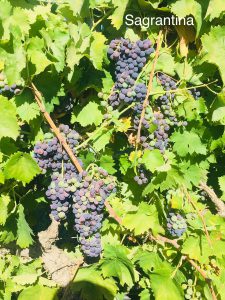
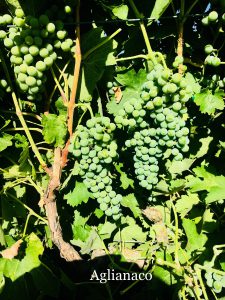
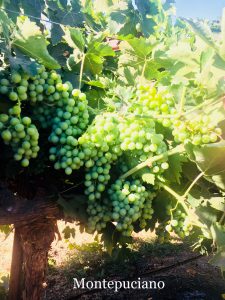
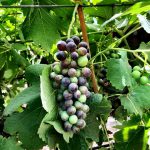
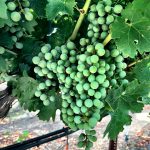
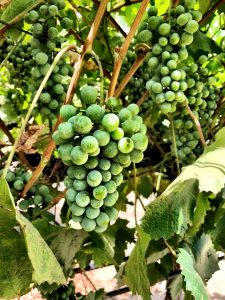
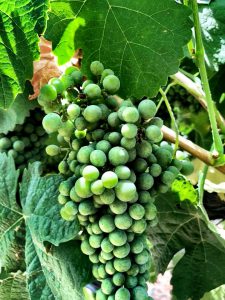
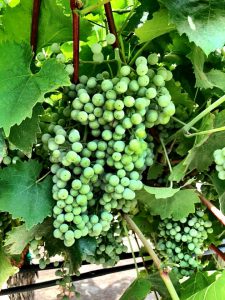
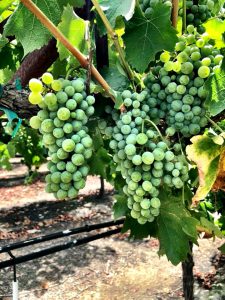
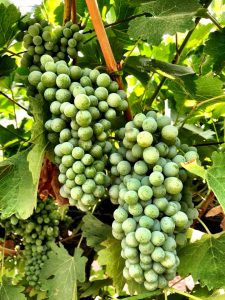
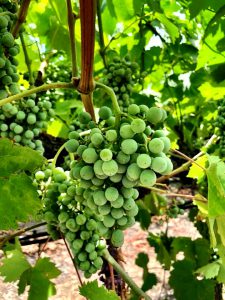
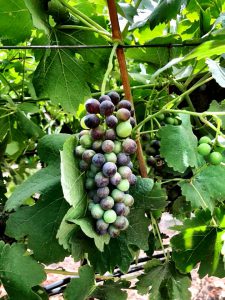
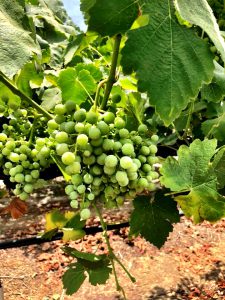
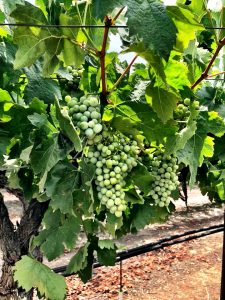
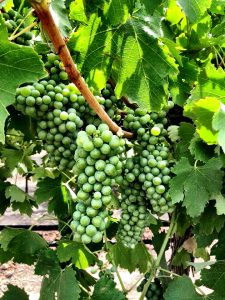
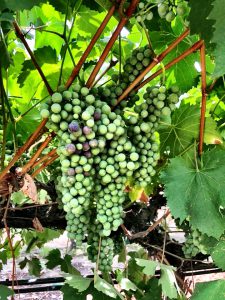
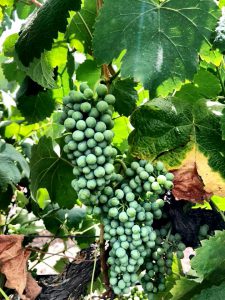
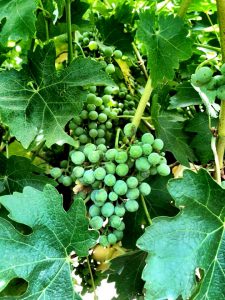
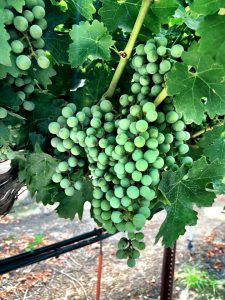
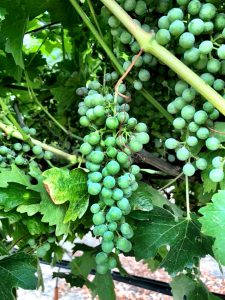
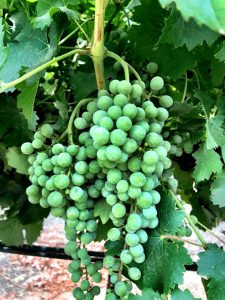
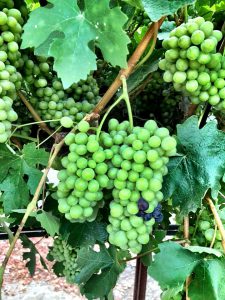
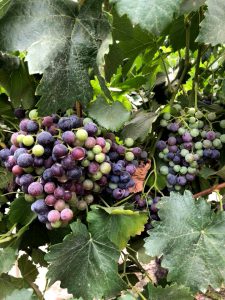
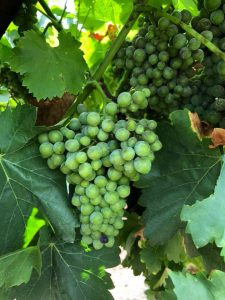



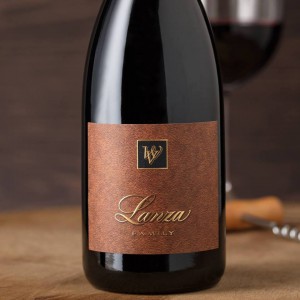
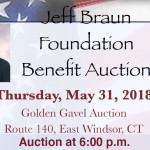
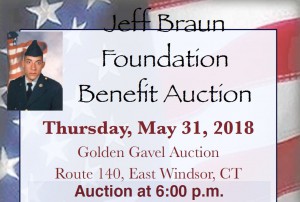
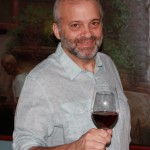
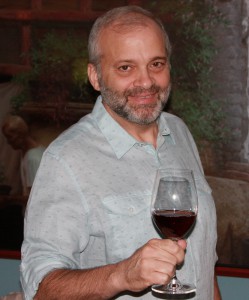
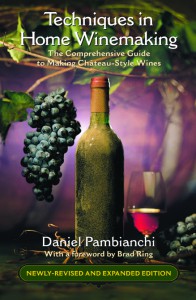
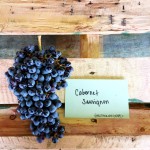




Recent Comments